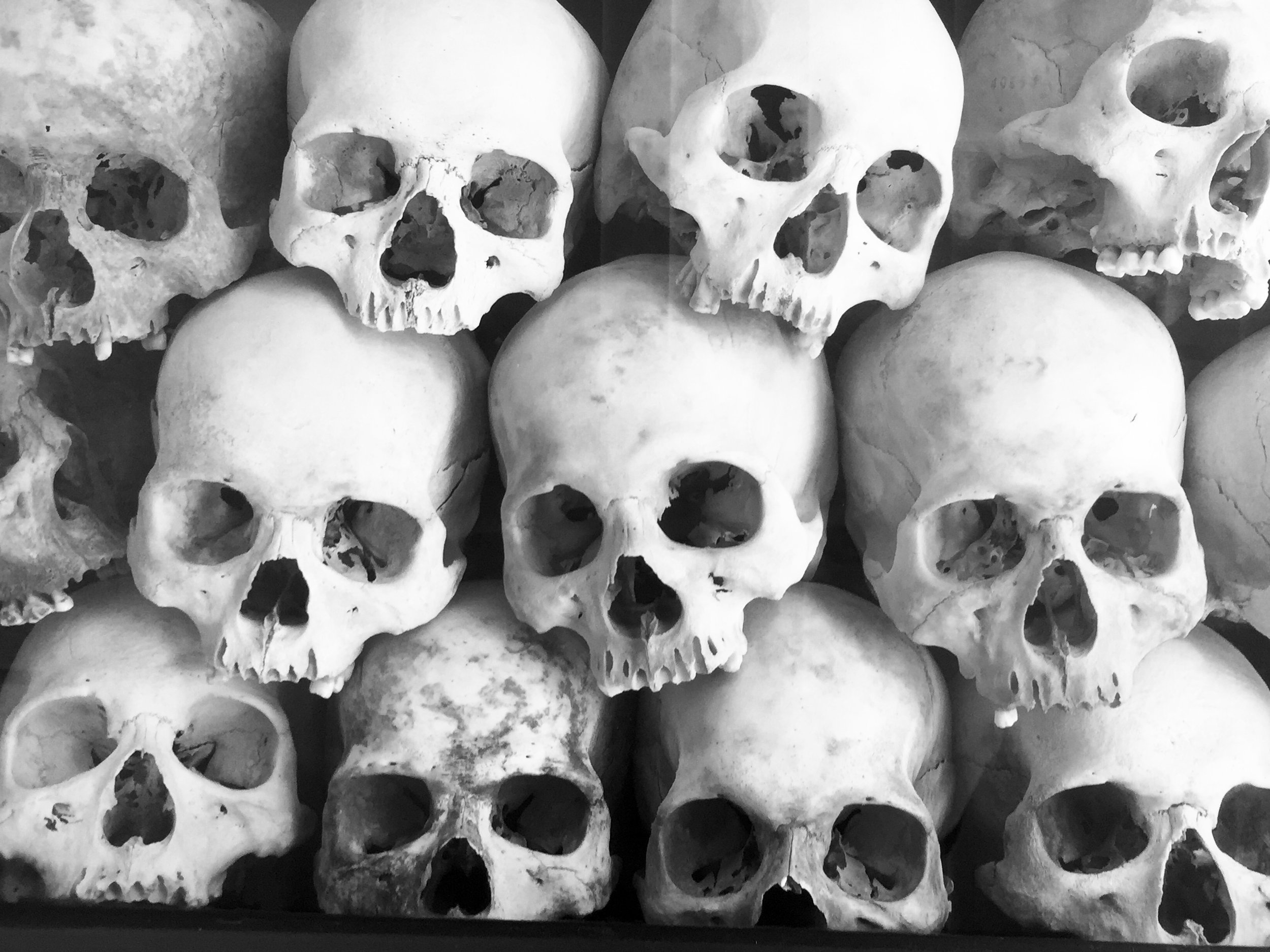In 2016, I visited Cambodia, a land of breathtaking beauty and profound historical scars. Amid the vibrant culture and the bustling streets of Phnon Penh, one experience stood apart: my visit to the Killing Fields and the Tuol Sleng Genocide Museum. These sites serve as somber reminders of one of the most brutal chapters in human history.
The Historical Context
Between 1975 and 1979, Cambodia was under the rule of the Khmer Rouge, led by Pol Pot. This regime sought to create an agrarian utopia, a vision that came at an unimaginable cost. Intellectuals, professionals, and anyone perceived as a threat were systematically eliminated. By the end of their reign, nearly two million people—about a quarter of the Cambodian population—had perished from execution, starvation, or disease.
During this time, I was a teenager, busy playing sports, graduating high school, attending photography school, and embarking on my career as a professional photographer. I was completely oblivious to the horrors happening halfway around the globe.
Walking Through Choeung Ek
The Killing Fields of Choeung Ek, located just outside Phnom Penh, is one of the most infamous mass grave sites. Walking through the grounds, the weight of history pressed down on me. Bones and fragments of clothing still occasionally surface after heavy rains, a haunting reminder of the atrocities committed there. The centerpiece of the site is a towering stupa filled with over 8,000 human skulls, a stark and chilling memorial.
Skulls stacked in the stupa memorial.
A memorial stands at the entrance of the site to honor those who were killed and to remind future generations to never let such atrocities happen again. The memorial is made up of skulls stacked several stories high, representing unidentified victims. Bones discovered from the burial sites are displayed in glass cases, some still wrapped with wires that their captors used as restraints.
Victim’s bones extracated from mass graves with wire restrains still attached.
As I moved through the area, I couldn’t escape the silence. It was as though even nature mourned.
Tuol Sleng Genocide Museum
Formerly a high school, Tuol Svay Prey High School was transformed into Tuol Sleng, also known as S-21, one of many prison camps throughout Phnom Penh. Victims were arrested and gathered here to endure unspeakable torture, designed to force confessions of crimes levied by the Khmer Rouge. Of the estimated 20,000 detainees who entered S-21, only 12 are known to have survived.
Walking through the museum, I saw tiny cells, walls marked with bloodstains, and haunting photographs of prisoners. Tools of torture used in this prison—waterboarding equipment, car batteries for electric shocks, searing hot metal instruments, and metal handcuffs used to hold victims as their fingernails were extracted and doused with alcohol—stood as stark evidence of the atrocities committed. The faces staring back from the photographs were of men, women, and children, each one a testament to a life cut short. It was overwhelming to grasp the scale of suffering that occurred within these walls.
A classroom used as a room of torture.
Reflections
S-21 and the Killing Fields have left an indelible mark blazed in my memory. While I lived my life during 1975-1979—thinking about friends, sports, and a promising future—hundreds of thousands of Cambodians were being rounded up and slaughtered. This realization has stayed with me ever since, forcing me to confront my own ignorance about the world at that time.
Similarly, a later visit to the Rwanda Genocide Museum, where over 800,000 Rwandans were massacred in the 1990s, came as another sobering reminder of humanity’s capacity for cruelty. Both genocides occurred during times when I was unaware or uninterested in global events. Did I have no clue, or did I simply not care?
Today, we live in an era where global and local news flows relentlessly through our screens and devices. We hear daily about killings in Israel, Gaza, the West Bank, and Lebanon. We hear about the oppression and killings by gangs in Port-au-Prince, Haiti. One in seven people globally are estimated to be exposed to conflict in 2024. Fifty countries rank in the index for extreme, high, or turbulent levels of conflict. While Palestine is rated as the most dangerous conflict zone, countries like Myanmar, Syria, Mexico, Nigeria, Brazil, Colombia, Sudan, Cameroon, and Pakistan follow closely.
Neil Postman’s 1985 book, Amusing Ourselves to Death: Public Discourse in the Age of Show Business, critiques how news and information often become entertainment, leaving us numb to social and justice issues. Postman argued, “[M]ost of our daily news is inert, consisting of information that gives us something to talk about but cannot lead to any meaningful action.”
The firehose of information today leaves us with little excuse to remain unaware of the violence occurring globally. I hope that what I saw at S-21 and the Killing Fields remains emblazoned in my mind so that I do not become desensitized to the conflict, suffering, and pain experienced by people every day. Let these memories fuel our collective resolve to act, educate, and promote peace in a turbulent world.




